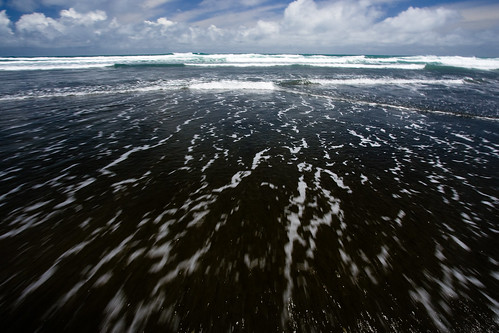five stages of development
Several years ago, I exchanged emails with Clarke Evans from the Texas Photographic Society, on the topic of projects, getting better and general ways forward with picture taking. One of the discussions centered around the five stages of development of a photographer, as Clarke saw them. He has kindly allowed me to share some of those comments here.
Stage 1: Just got a camera and is happy to be taking pictures and getting anything that works. Doesn't really care what other people think about the photographs, just taking them for the fun of it. Shooting birthday parties, Christmas and snap shots of the family.
Stage 2: Decides to learn a little more and starts paying attention to the camera. Learns about lenses, f/stops and shutter speeds and the like. Begins to take control of the camera settings and gets some better results. Might even read the camera manual. Starts maybe entering competitions or joins a camera club.
Stage 3: Begins paying more attention to subject matter - lighting becomes important. Composition, posing of subjects. Still photographs a wide variety of subjects but the images have improved.
Stage 4: Mixes all of the first three stages and becomes a decent photographer. Can make a pretty good photograph under most situations. Knows and understands lighting, composition and how to use the camera. At this stage, the photographer is competent with a camera and making photographs. Some go on to become professional photographers, others continue as amateurs and take good pictures purely for the love of it.
Stage 5: Photographer hits upon something they want to say. It just happens. They decide to pursue a project and whole heartedly dive into it. In stage 5, the photographer has gone full circle back to Stage 1 and again doesn't care what others think of the images. They are photographing something they want to explore for their own personal reasons. A good example of this is O. Rufus Lovett's book from UT Press, Weeping Mary. Rufus went back to Weeping Mary every weekend and bought gas from one gas station and eventually asked if he could take the owner's picture. Over time he started photographing all of the 200 residents of the town. Eventually that fascination with this one subject became a book. Another example would be Ansel Adams and his persistent photographing of Yosemite.
There's nothing wrong with being at any of these stages, one isn't better than the other, just different points in the development of a point of view. Probably we are also all going back and forth between some of the middle stages at different points in time - there is always plenty to learn. I feel I've been somewhere between 3 and 4 for a while now, never quite hitting on something that really can hold my attention long enough to be something I really wanted to express.
Ted Byrne made a great comment on this post, that I think is attempting to say something similar. Too many choices and too many distractions cause us to flit around between subjects and struggle to settle in on a topic and really explore it to an interesting depth, beyond the superficial surface. I know I'm often guilty of that, jumping between subject matter and new styles, lenses or whatever catches my eye. There is certainly nothing wrong with that if it gives you enjoyment and makes good pictures, but it isn't likely to ever really amount to much. I often see that in coffee shop photography exhibits, lots of good images, with nothing at all connecting them to each other, apart from them being taken by the same person. Usually if you go to an actual gallery show, you see something quite different - a much narrower selection of subject, a common theme or message, connecting all the images to each other. Not such a catholic selection of subjects or styles on display. More concept album, less greatest hits.
The way forward isn't really that hard. Pick a project, any project. Commit to it, even for a weekend and try to make 10 great pictures. Not one, not two, but push that little bit further and explore the subject. The project could be a birthday party. It could be your favourite hobby. Or a building you find fascinating. It doesn't need to be a grand theme. It could just be your lunch. Find something that matters to you and make the pictures of it that try to express why you care about it. Go back a few times, expend some effort to go beyond that obvious first view. I spent a couple of years visiting one garden here in Austin, 2 or 3 times a month for 2 years. I think after the first 6 months I'd actually managed to work my way through all of the cliches and other people's ideas that crowded my head and actually start making my own pictures. It can take me a while to get to something fresh. Or you could be finished with the project in a day. The point is to find something to say.





4 comments:
It can be also they other way around. From the perspective of the fast moving world of business, amateur photography is an area where you can discover (or define) a long-term project for yourself, with your own terms, not subject to "market forces" or such external factors. I suspect my fascination with photography stems partly from this. (I'm on the early stages of the journey, however.)
Brilliant! But, then we have grown accustomed to that from you.
A more extensive discussion of those levels is a 3-part series by Geoff Barr which was posted on the Luminous Landscape a long time back. It decomposes the levels into specific technical and aesthetic components. Worth a read:
http://www.luminous-landscape.com/essays/next-level.shtml
Doesn't look like the 2nd and 3rd part are linked. So here's the 3rd part, which links back to all of them: http://www.llvj.com/essays/levels3.shtml
Post a Comment